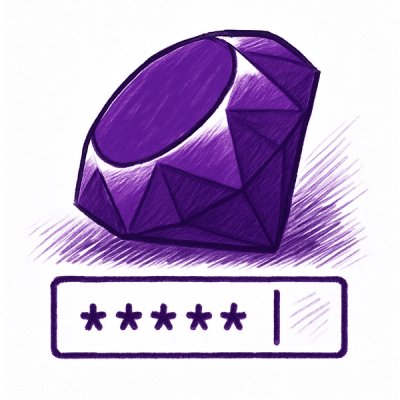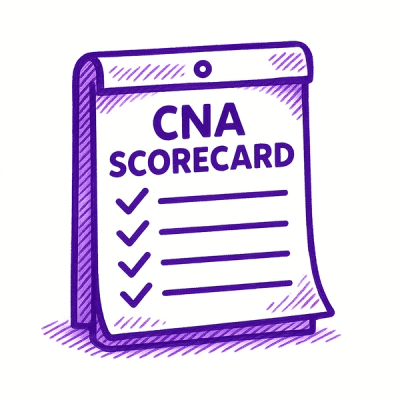
Security News
npm Adopts OIDC for Trusted Publishing in CI/CD Workflows
npm now supports Trusted Publishing with OIDC, enabling secure package publishing directly from CI/CD workflows without relying on long-lived tokens.
@napi-rs/canvas
Advanced tools
@napi-rs/canvas is a high-performance canvas implementation for Node.js, providing a set of APIs for drawing graphics, manipulating images, and creating visual content. It is built on top of the napi-rs framework, which allows for native performance by leveraging Rust's capabilities.
Drawing Shapes
This feature allows you to draw basic shapes like rectangles on a canvas. The code sample demonstrates how to create a canvas and draw a green rectangle on it.
const { createCanvas } = require('@napi-rs/canvas');
const canvas = createCanvas(200, 200);
const ctx = canvas.getContext('2d');
ctx.fillStyle = 'green';
ctx.fillRect(10, 10, 100, 100);Image Manipulation
This feature allows you to load and manipulate images. The code sample shows how to load an image and draw it onto a canvas.
const { loadImage, createCanvas } = require('@napi-rs/canvas');
const canvas = createCanvas(200, 200);
const ctx = canvas.getContext('2d');
loadImage('path/to/image.jpg').then((image) => {
ctx.drawImage(image, 0, 0, 200, 200);
});Text Rendering
This feature enables text rendering on a canvas. The code sample demonstrates how to set a font and render text onto the canvas.
const { createCanvas } = require('@napi-rs/canvas');
const canvas = createCanvas(200, 200);
const ctx = canvas.getContext('2d');
ctx.font = '30px Arial';
ctx.fillText('Hello World', 50, 50);The 'canvas' package is a widely used library for drawing graphics in Node.js. It provides a similar API to the HTML5 canvas element. Compared to @napi-rs/canvas, it is written in C++ and can be more challenging to install due to native dependencies, but it is very mature and well-supported.
Node-canvas is another popular library for creating and manipulating canvas graphics in Node.js. It offers a comprehensive set of features similar to @napi-rs/canvas. While node-canvas is based on Cairo and is written in C++, @napi-rs/canvas leverages Rust for potentially better performance and easier cross-platform support.
skr canvas🚀 Help me to become a full-time open-source developer by sponsoring me on Github
Google Skia binding to Node.js via Node-API, 0 System dependencies!
⚠️ This project is in pre-release stage. And there may be some bugs.
For details on planned features and future direction please refer to the Roadmap.
yarn add @napi-rs/canvas
npm install @napi-rs/canvas
arm64cortex-a57 or newer CPU architecture on Linux.
All Apple M chips on macOS.
armv7cortex-a7 or newer CPU architecture.
Since Skia relies on the glibc 2.18 API, you need to have at least glibc version >= 2.18 on your system.
To use this library on Lambda you will need to use a Lambda layer.
You can simply attach a lambda layer by getting an ARN from Canvas-Lambda-Layer
Make sure to exclude
@napi-rs/canvaswhile bundling your Lambda.
const { promises } = require('node:fs')
const { join } = require('node:path')
const { createCanvas, loadImage } = require('@napi-rs/canvas')
const canvas = createCanvas(300, 320)
const ctx = canvas.getContext('2d')
ctx.lineWidth = 10
ctx.strokeStyle = '#03a9f4'
ctx.fillStyle = '#03a9f4'
// Wall
ctx.strokeRect(75, 140, 150, 110)
// Door
ctx.fillRect(130, 190, 40, 60)
// Roof
ctx.beginPath()
ctx.moveTo(50, 140)
ctx.lineTo(150, 60)
ctx.lineTo(250, 140)
ctx.closePath()
ctx.stroke()
async function main() {
// load images from disk or from a URL
const catImage = await loadImage('path/to/cat.png')
const dogImage = await loadImage('https://example.com/path/to/dog.jpg')
ctx.drawImage(catImage, 0, 0, catImage.width, catImage.height)
ctx.drawImage(dogImage, canvas.width / 2, canvas.height / 2, dogImage.width, dogImage.height)
// export canvas as image
const pngData = await canvas.encode('png') // JPEG, AVIF and WebP are also supported
// encoding in libuv thread pool, non-blocking
await promises.writeFile(join(__dirname, 'simple.png'), pngData)
}
main()

const { writeFileSync } = require('fs')
const { join } = require('path')
const { createCanvas, GlobalFonts } = require('@napi-rs/canvas')
GlobalFonts.registerFromPath(join(__dirname, '..', 'fonts', 'AppleColorEmoji@2x.ttf'), 'Apple Emoji')
GlobalFonts.registerFromPath(join(__dirname, '..', '__test__', 'fonts', 'COLRv1.ttf'), 'COLRv1')
console.info(GlobalFonts.families)
const canvas = createCanvas(760, 360)
const ctx = canvas.getContext('2d')
ctx.font = '50px Apple Emoji'
ctx.strokeText('😀😃😄😁😆😅😂🤣☺️😊😊😇', 50, 150)
ctx.font = '100px COLRv1'
ctx.fillText('abc', 50, 300)
const b = canvas.toBuffer('image/png')
writeFileSync(join(__dirname, 'draw-emoji.png'), b)

See benchmark for benchmark code.
Hardware info:
,MMMM. Host - xxxxxxxxxxxxxxxxxxxxxxx
.MMMMMM Machine - Mac15,9
MMMMM, Kernel - 24.0.0
.;MMMMM:' MMMMMMMMMM;. OS - macOS 15.0.1 Sequoia
MMMMMMMMMMMMNWMMMMMMMMMMM: DE - Aqua
.MMMMMMMMMMMMMMMMMMMMMMMMWM. WM - Quartz Compositor
MMMMMMMMMMMMMMMMMMMMMMMMM. Packages - 194 (Homebrew), 32 (cargo)
;MMMMMMMMMMMMMMMMMMMMMMMM: Shell - zsh
:MMMMMMMMMMMMMMMMMMMMMMMM: Terminal - warpterminal (Version v0.2024.10.23.14.49.stable_00)
.MMMMMMMMMMMMMMMMMMMMMMMMM. Resolution - 5120x2880@160fps (as 2560x1440)
MMMMMMMMMMMMMMMMMMMMMMMMMMM. 2992x1934@120fps (as 1496x967)
.MMMMMMMMMMMMMMMMMMMMMMMMMM. 2232x1512@60fps (as 1116x756)
MMMMMMMMMMMMMMMMMMMMMMMM Uptime - 1d 2h 32m
;MMMMMMMMMMMMMMMMMMMM. CPU - Apple M3 Max (16)
.MMMM,. .MMMM,. CPU Load - 16%
Memory - 50.1 GB / 134.2 GB
Battery - 78% & Discharging
Disk Space - 624.0 GB / 994.7 GB
❯ yarn bench
Draw a House and export to PNG
┌─────────┬─────────────────┬───────────────────────┬──────────────────────────┬────────────────────────────┬───────────────────────────┬─────────┐
│ (index) │ Task name │ Latency average (ns) │ Latency median (ns) │ Throughput average (ops/s) │ Throughput median (ops/s) │ Samples │
├─────────┼─────────────────┼───────────────────────┼──────────────────────────┼────────────────────────────┼───────────────────────────┼─────────┤
│ 0 │ '@napi-rs/skia' │ '14676992.14 ± 0.68%' │ '14602333.00' │ '68 ± 0.59%' │ '68' │ 69 │
│ 1 │ 'skia-canvas' │ '21167809.17 ± 2.05%' │ '20960021.00 ± 13646.00' │ '47 ± 1.31%' │ '48' │ 64 │
│ 2 │ 'node-canvas' │ '16552027.42 ± 0.70%' │ '16451291.50 ± 2208.50' │ '60 ± 0.62%' │ '61' │ 64 │
└─────────┴─────────────────┴───────────────────────┴──────────────────────────┴────────────────────────────┴───────────────────────────┴─────────┘
Draw Gradient and export to PNG
┌─────────┬─────────────────┬───────────────────────┬─────────────────────────┬────────────────────────────┬───────────────────────────┬─────────┐
│ (index) │ Task name │ Latency average (ns) │ Latency median (ns) │ Throughput average (ops/s) │ Throughput median (ops/s) │ Samples │
├─────────┼─────────────────┼───────────────────────┼─────────────────────────┼────────────────────────────┼───────────────────────────┼─────────┤
│ 0 │ '@napi-rs/skia' │ '15228495.58 ± 0.53%' │ '15146312.50 ± 1187.50' │ '66 ± 0.48%' │ '66' │ 66 │
│ 1 │ 'skia-canvas' │ '21725564.41 ± 2.20%' │ '21412520.50 ± 2104.50' │ '46 ± 1.39%' │ '47' │ 64 │
│ 2 │ 'node-canvas' │ '17976022.14 ± 1.53%' │ '17563479.50 ± 5104.50' │ '56 ± 1.38%' │ '57' │ 64 │
└─────────┴─────────────────┴───────────────────────┴─────────────────────────┴────────────────────────────┴───────────────────────────┴─────────┘
new Path2D()
new Path2D(path: Path2D)
// new Path2D('M108.956,403.826c0,0,0.178,3.344-1.276,3.311 c-1.455-0.033-30.507-84.917-66.752-80.957C40.928,326.18,72.326,313.197,108.956,403.826z')
new Path2D(path: string)
export interface DOMMatrix2DInit {
a: number
b: number
c: number
d: number
e: number
f: number
}
export class Path2D {
constructor(path?: Path2D | string)
addPath(path: Path2D, transform?: DOMMatrix2DInit): void
arc(x: number, y: number, radius: number, startAngle: number, endAngle: number, anticlockwise?: boolean): void
arcTo(x1: number, y1: number, x2: number, y2: number, radius: number): void
bezierCurveTo(cp1x: number, cp1y: number, cp2x: number, cp2y: number, x: number, y: number): void
closePath(): void
ellipse(
x: number,
y: number,
radiusX: number,
radiusY: number,
rotation: number,
startAngle: number,
endAngle: number,
anticlockwise?: boolean,
): void
lineTo(x: number, y: number): void
moveTo(x: number, y: number): void
quadraticCurveTo(cpx: number, cpy: number, x: number, y: number): void
rect(x: number, y: number, w: number, h: number): void
// PathKit methods
op(path: Path2D, operation: PathOp): Path2D
toSVGString(): string
getFillType(): FillType
getFillTypeString(): string
setFillType(type: FillType): void
simplify(): Path2D
asWinding(): Path2D
stroke(stroke?: StrokeOptions): Path2D
transform(transform: DOMMatrix2DInit): Path2D
getBounds(): [left: number, top: number, right: number, bottom: number]
computeTightBounds(): [left: number, top: number, right: number, bottom: number]
trim(start: number, end: number, isComplement?: boolean): Path2D
round(radius: number): Path2D
equals(path: Path2D): boolean
}
PathKit is a toolset for manipulating Path in Skia, supporting quadratic beziers, cubic beziers and conics.
The main features are.
.op(path, PathOp)
const pathOne = new Path2D(
'M8 50H92C96.4183 50 100 53.5817 100 58V142C100 146.418 96.4183 150 92 150H8C3.58172 150 0 146.418 0 142V58C0 53.5817 3.58172 50 8 50Z',
)
const pathTwo = new Path2D(
'"M58 0H142C146.418 0 150 3.58172 150 8V92C150 96.4183 146.418 100 142 100H58C53.5817 100 50 96.4183 50 92V8C50 3.58172 53.5817 0 58 0Z',
)
pathOne.op(pathTwo, PathOp.Intersect).toSVGString()
// => "M100 100L58 100C53.5817 100 50 96.4183 50 92L50 50L92 50C96.4183 50 100 53.5817 100 58L100 100Z"
FillType in Path.asWinding()
You can convert fill-rule="evenodd" to fill-rule="nonzero" in SVG.
This is useful for OpenType font-related tools, as fill-rule="nonzero" is only supported in OpenType fonts.

const pathCircle = new Path2D(
'M24.2979 13.6364H129.394V40.9091H24.2979L14.6278 27.2727L24.2979 13.6364ZM21.9592 0C19.0246 0 16.2716 1.42436 14.571 3.82251L1.67756 22.0043C-0.559186 25.1585 -0.559186 29.387 1.67756 32.5411L14.571 50.7227C16.2716 53.1209 19.0246 54.5455 21.9592 54.5455H70.4673V68.1818H16.073C11.0661 68.1818 7.00728 72.2518 7.00728 77.2727V113.636C7.00728 118.657 11.0661 122.727 16.073 122.727H70.4673V150H84.0658V122.727H128.041C130.975 122.727 133.729 121.303 135.429 118.905L148.323 100.723C150.559 97.5686 150.559 93.3405 148.323 90.1864L135.429 72.0045C133.729 69.6064 130.975 68.1818 128.041 68.1818H84.0658V54.5455H133.927C138.934 54.5455 142.993 50.4755 142.993 45.4545V9.09091C142.993 4.07014 138.934 0 133.927 0H21.9592ZM125.702 109.091H20.6058V81.8182H125.702L135.372 95.4545L125.702 109.091Z',
)
pathCircle.setFillType(FillType.EvenOdd)
pathCircle.asWinding().toSVGString()
// => "M24.2979 13.6364L129.394 13.6364L129.394 40.9091L24.2979 40.9091L14.6278 27.2727L24.2979 13.6364ZM21.9592 0C19.0246 0 16.2716 1.42436 14.571 3.82251L1.67756 22.0043C-0.559186 25.1585 -0.559186 29.387 1.67756 32.5411L14.571 50.7227C16.2716 53.1209 19.0246 54.5455 21.9592 54.5455L70.4673 54.5455L70.4673 68.1818L16.073 68.1818C11.0661 68.1818 7.00728 72.2518 7.00728 77.2727L7.00728 113.636C7.00728 118.657 11.0661 122.727 16.073 122.727L70.4673 122.727L70.4673 150L84.0658 150L84.0658 122.727L128.041 122.727C130.975 122.727 133.729 121.303 135.429 118.905L148.323 100.723C150.559 97.5686 150.559 93.3405 148.323 90.1864L135.429 72.0045C133.729 69.6064 130.975 68.1818 128.041 68.1818L84.0658 68.1818L84.0658 54.5455L133.927 54.5455C138.934 54.5455 142.993 50.4755 142.993 45.4545L142.993 9.09091C142.993 4.07014 138.934 0 133.927 0L21.9592 0ZM125.702 109.091L20.6058 109.091L20.6058 81.8182L125.702 81.8182L135.372 95.4545L125.702 109.091Z"
.simplify()
Set the path to the same non-overlapping contour as the original path area, which means that it can also remove overlapping paths.

SVG with overlapping paths (Left)
const path =
'M2.933,89.89 L89.005,3.818 Q90.412,2.411 92.249,1.65 Q94.087,0.889 96.076,0.889 Q98.065,0.889 99.903,1.65 Q101.741,2.411 103.147,3.818 L189.22,89.89 Q190.626,91.296 191.387,93.134 Q192.148,94.972 192.148,96.961 Q192.148,98.95 191.387,100.788 Q190.626,102.625 189.219,104.032 Q187.813,105.439 185.975,106.2 Q184.138,106.961 182.148,106.961 Q180.159,106.961 178.322,106.2 Q176.484,105.439 175.077,104.032 L89.005,17.96 L96.076,10.889 L103.147,17.96 L17.075,104.032 Q15.668,105.439 13.831,106.2 Q11.993,106.961 10.004,106.961 Q8.015,106.961 6.177,106.2 Q4.339,105.439 2.933,104.032 Q1.526,102.625 0.765,100.788 Q0.004,98.95 0.004,96.961 Q0.004,94.972 0.765,93.134 Q1.526,91.296 2.933,89.89 Z'
path.simplify().toSVGString()
// => "M89.005 3.818L2.933 89.89Q1.526 91.296 0.765 93.134Q0.004 94.972 0.004 96.961Q0.004 98.95 0.765 100.788Q1.526 102.625 2.933 104.032Q4.339 105.439 6.177 106.2Q8.015 106.961 10.004 106.961Q11.993 106.961 13.831 106.2Q15.668 105.439 17.075 104.032L96.076 25.031L175.077 104.032Q176.484 105.439 178.322 106.2Q180.159 106.961 182.148 106.961Q184.138 106.961 185.975 106.2Q187.813 105.439 189.219 104.032Q190.626 102.625 191.387 100.788Q192.148 98.95 192.148 96.961Q192.148 94.972 191.387 93.134Q190.626 91.296 189.22 89.89L103.147 3.818Q101.741 2.411 99.903 1.65Q98.065 0.889 96.076 0.889Q94.087 0.889 92.249 1.65Q90.412 2.411 89.005 3.818Z"
The tiger.json was serialized from gojs/samples/tiger

node example/anime-girl.js
| SVG | PNG |
|---|---|
CC-BY-SA 3.0 by Niabot |  CC-BY-SA 3.0 by Niabot |
You can build this project from source, the system requirements are here: https://skia.org/docs/user/build
# Clone the code:
$ git clone --recurse-submodules https://github.com/Brooooooklyn/canvas.git
$ cd canvas
# Build Skia:
$ node scripts/build-skia.js
# Install NPM packages, build the Node.js addon:
$ npm install -g yarn
$ yarn install --mode=skip-build # Here are modules that are used for benchmarking and are hard to install, you can skip it by specifying `--mode=skip-build`
$ sudo dnf install clang # https://fedora.pkgs.org/34/fedora-x86_64/clang-12.0.0-0.3.rc1.fc34.x86_64.rpm.html
$ yarn build
# All done! Run test cases or examples now:
$ yarn test
$ node example/tiger.js
You can pull skia pre-build binaries if you just care the Rust part:
# Clone the code:
$ git clone --recurse-submodules https://github.com/Brooooooklyn/canvas.git
$ cd canvas
# Download Skia binaries:
# It will pull the binaries match the git hash in `./skia` submodule
$ node scripts/release-skia-binary.mjs --download
# Install NPM packages, build the Node.js addon:
$ npm install -g yarn
$ yarn install --mode=skip-build
$ sudo dnf install clang # https://fedora.pkgs.org/34/fedora-x86_64/clang-12.0.0-0.3.rc1.fc34.x86_64.rpm.html
$ yarn build
# All done! Run test cases or examples now:
$ yarn test
$ node example/tiger.js
FAQs
Canvas for Node.js with skia backend
The npm package @napi-rs/canvas receives a total of 1,021,687 weekly downloads. As such, @napi-rs/canvas popularity was classified as popular.
We found that @napi-rs/canvas demonstrated a healthy version release cadence and project activity because the last version was released less than a year ago. It has 2 open source maintainers collaborating on the project.
Did you know?

Socket for GitHub automatically highlights issues in each pull request and monitors the health of all your open source dependencies. Discover the contents of your packages and block harmful activity before you install or update your dependencies.

Security News
npm now supports Trusted Publishing with OIDC, enabling secure package publishing directly from CI/CD workflows without relying on long-lived tokens.

Research
/Security News
A RubyGems malware campaign used 60 malicious packages posing as automation tools to steal credentials from social media and marketing tool users.

Security News
The CNA Scorecard ranks CVE issuers by data completeness, revealing major gaps in patch info and software identifiers across thousands of vulnerabilities.